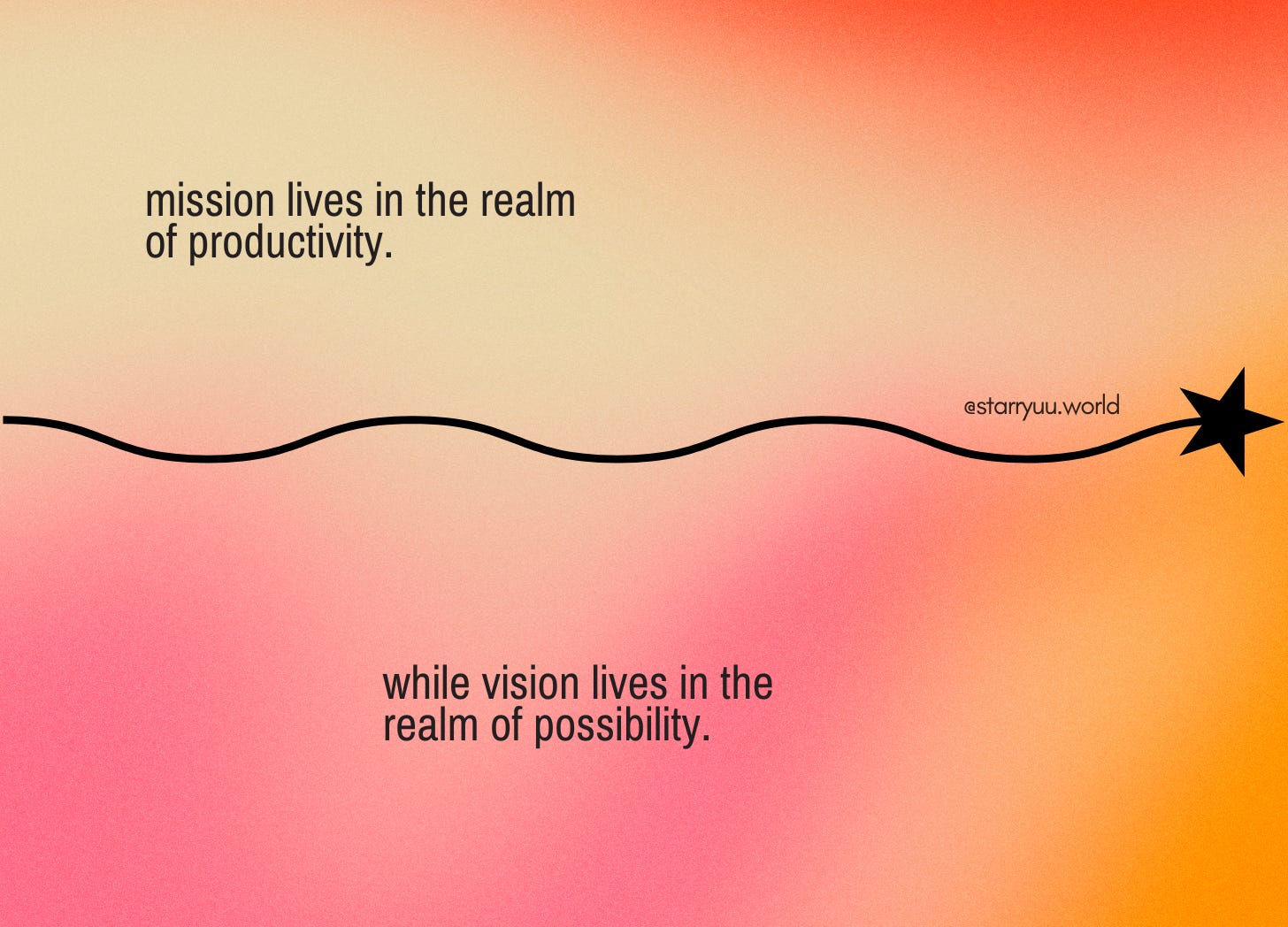⊹ starryuu.world is a place where self reflection and practical tools merge in support of co-creating a more abundant future of work. ⊹
our content is for self-reflection purposes only and does not replace medical advice.
When you wake up and think about what kind of day you want to have, you've tapped into your imagination and painted a vision. It's like your brain is an artist working backward, completing the picture first, then interpreting the colors, brushes, and subjects that will be used for your vision to be actualized.
It’s pretty cool how our minds perform this trick without much effort—whether seeing in our mind's eye the outcome of a recipe we're shopping for or imagining an entirely new way of living. We are all visionary beings, seeking to contribute to a future that aligns with the impact we wish to have. It doesn’t matter if that impact relates to your lifelong goals, one day within it, your workplace, or society at large.
When crafting a vision within your mind, you naturally outline the steps needed for that vision to become a reality. Whether it's the instructions for creating a meal or the art supplies needed to paint a picture, your steps are your "how," aka your "mission."
When we applied the essence of Justin Francisco's Drop Your To-Do List and Just Be meditation to the concepts of mission and vision, this distinction became even more clear. A mission statement best serves the "to-do" list essential to making our vision a reality. Alternatively, a vision statement helps us to visualize how we'll be able "to be"—existing in ways that may not yet be real, including the feeling you'll experience while eating a completed recipe or viewing a final painting, the environment in which you're doing so, who is with you, and who is benefiting.
Missions live in the realm of productivity, while visions live in the realm of possibility—showing us alternatives to systems that aren't working, and inviting us to consider what collective wellbeing could look like. Your mission helps you participate, and your values guide your choices in ways that honor your truth.
Whether you're crafting a vision for your day, your life, or a company—and even if your vision emerges from individual experience, like starting a vegan restaurant because you live a cruelty-free life—your "big picture" can expand beyond personal purpose and become applicable to collective abundance, like imagining a world where our food systems are no longer exploitative.
You can imagine and create alternatives to systems that aren't working and the best part is you don’t have to do it alone. Vision is inherently collaborative. While not everyone may have the same exact mission in life, it's profound when you meet a group of people who share in your vision and bring complementary skills to support each other’s unique missions in order to get there. This is the core of co-creation: when individual visions align to serve something larger than one person's agenda.
📞 values-based job opportunities
📓 new y3k glossary posts
The most transformative visions don't encourage us to simply imagine better versions of existing systems. Instead, they challenge us to tap into the natural ignitors of human energy and creativity. They don't ask questions like "How can we do this more efficiently?" They ask questions like "What if we didn't have to do this at all?" They invite us to remember that the future is not something that happens to us, but something we actively create through every choice we make.
Founders have a responsibility to build their companies on vision and mission statements that can foster employees' evolution and purpose, driven by metrics that can support the collective. In our daily lives, we have the same opportunity—starting with our breakfast recipe.
🪄 ready to co-create a more abundant future with us?
➔ comment with your vision that supports a future of work rooted in collective abundance.





